CarEdge saved me over 4,500 dollars on a brand new Honda Pilot. I can't say thank you enough.
Price intelligence
Find a wide range of vehicle listings with market insights on new and used listings near you.


Help us personalize your CarEdge experience — it only takes a second.
Your answers help us personalize your CarEdge journey — we’ll follow up with tips and next steps that match your buying timeline.
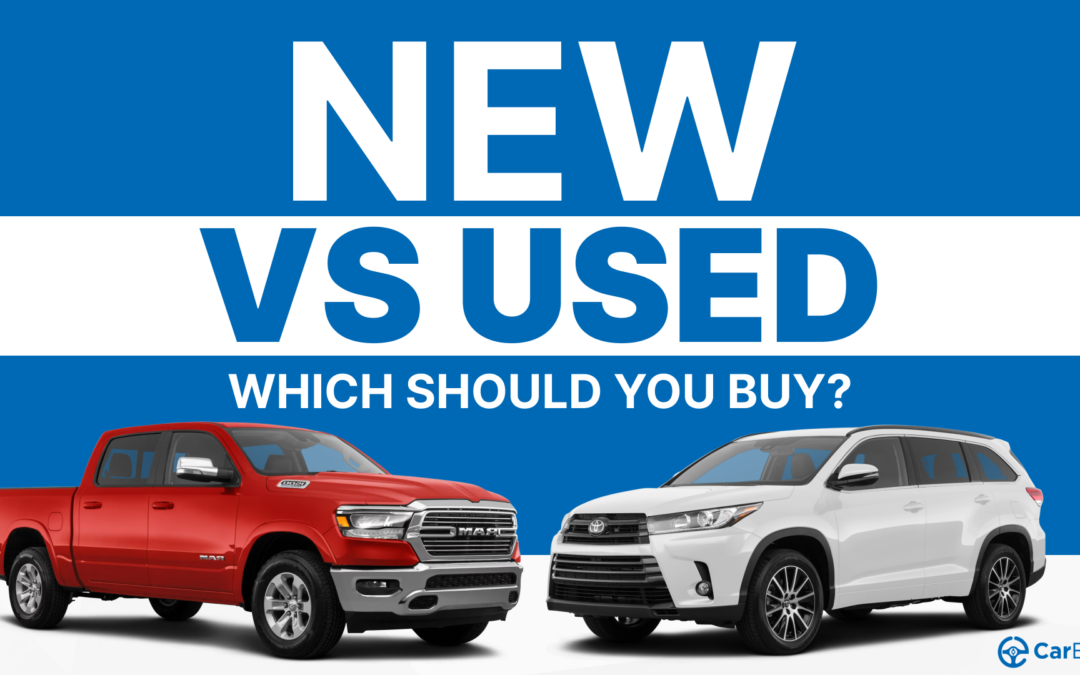
In 2023, the automotive market continues to navigate the unpredictable seas of supply and demand. A lingering used car shortage from previous years is causing 2-3-year-old in-demand models to skyrocket in price, while new car inventories are bloating due to overproduction. What does this mean for you, the savvy car shopper? Let’s dive in.

The latest data from Cox Automotive shows that in many cases, there’s a shortage of 2-3 year old used cars. For in-demand models that are just a few years old, demand far exceeds supply. Dealers are using this to their advantage (to the surprise of no one…) and are marking them up severely. For the brands we’ll talk about below, 2-3 year-old used cars often cost nearly the same as a brand-new car. There’s a totally opposite situation for NEW cars. For many makes and models, there’s now an oversupply of new cars in 2023, just two years after the car shortages of 2021.

New car available supply (total vehicles on the lot) is up 71% since last year, and dealerships are finding their lots chock-full of shiny new cars.
In terms of days’ supply, today’s market is up 47% since spring 2022. Days’ supply is a common auto industry metric that is calculated by dividing the total number of available vehicles by the average daily sales number from the last 45 days. It’s one of many available insights for every new and used listing with CarEdge Data.
790,000 more vehicles on sale today compared to May 2022 means dealers are more motivated than ever to cut deals and move inventory. However, despite this surge in supply, the average listing price for a new car is still 5% higher than last year.
On the flip side, used car inventory is 13% lower compared to last year. High prices have led buyers to say NO to used cars, resulting in a 4% drop in sales rates and listing prices. However, these prices remain stubbornly above 2021 levels.
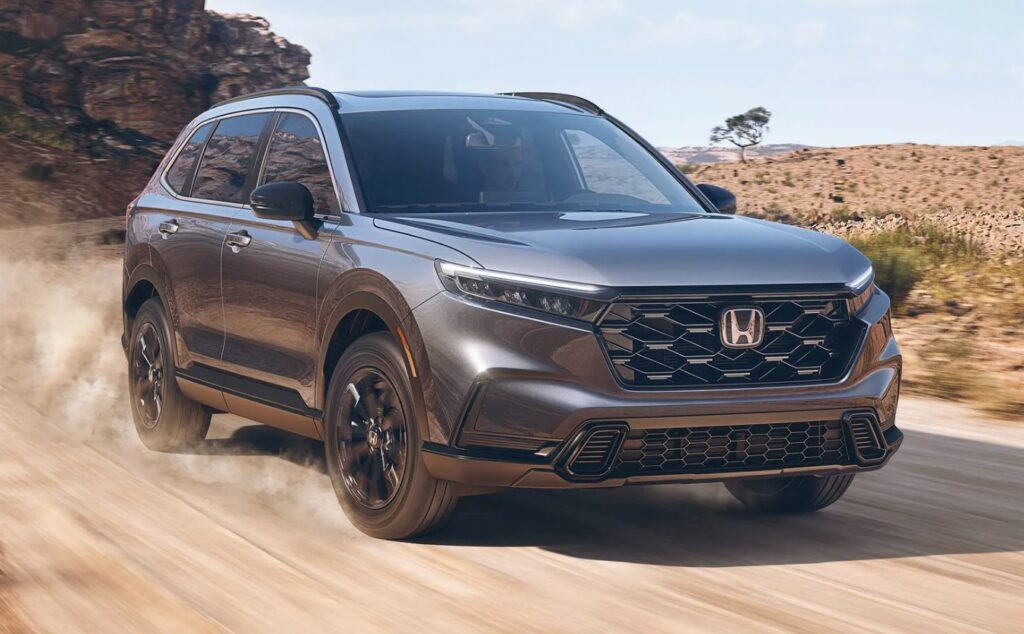
With brands like Toyota, Lexus, Kia, Honda, Subaru, Hyundai, BMW, and Land Rover, new car supply shortages are making used models a more attractive option than their new counterparts. How so? Dealers continue to markup these cars in many markets.
On the other hand, brands like Ford, Lincoln, Dodge, Ram, Chrysler, Jeep, and Buick are dealing with a glut of new cars, making new vehicles especially negotiable today, and offering more value than used inventory at nearly the same price AFTER negotiation.
Based on the latest new car inventory, these brands are most negotiable in 2023:
Nationally, these automakers all have current new car inventory well above the historical norm of 60 days’ supply. See local days’ supply for models you’re interested in with CarEdge Data on Car Search.
Using the tools available through CarEdge Data, we analyzed new car inventory by brand in the three largest markets across the nation. Some notable differences are seen across California, Texas, and Florida.
| Brand | Days' Supply (CA) | Days' Supply (TX) | Days' Supply (FL) |
|---|---|---|---|
| Toyota | 39 | 43 | 38 |
| Kia | 44 | 46 | 41 |
| Honda | 46 | 47 | 43 |
| Lexus | 45 | 50 | 45 |
| BMW | 53 | 67 | 57 |
| Land Rover | 70 | 65 | 64 |
| Subaru | 59 | 53 | 55 |
| Hyundai | 66 | 53 | 56 |
| Volkswagen | 63 | 63 | 56 |
| Cadillac | 60 | 57 | 63 |
| Chevrolet | 68 | 64 | 68 |
| Nissan | 65 | 59 | 54 |
| Mercedes | 73 | 68 | 69 |
| Porsche | 82 | 61 | 72 |
| Mazda | 62 | 68 | 68 |
| GMC | 77 | 72 | 73 |
| Audi | 89 | 72 | 62 |
| Acura | 72 | 81 | 60 |
| Genesis | 96 | 95 | 87 |
| Mitsubishi | 91 | 65 | 65 |
| Mini | 81 | 94 | 92 |
| Ford | 80 | 71 | 67 |
| Dodge | 101 | 84 | 92 |
| Lincoln | 104 | 72 | 72 |
| Ram | 147 | 116 | 132 |
| Infiniti | 94 | 88 | 73 |
| Chrysler | 106 | 86 | 87 |
| Jeep | 126 | 103 | 119 |
| Jaguar | 101 | 90 | 81 |
| Buick | 100 | 106 | 84 |
Hyundai, Nissan, Mitsubishi and Audi have much higher inventory on the West Coast, while Toyota, Kia and Honda have higher new car inventory in Texas. Be sure to check local market supply in your area to get the best sense of negotiability.

In terms of segments, compact cars, midsize cars, subcompact cars, compact crossover/SUVs, minivans, and full-size crossover/SUVs are experiencing a supply shortage.
Conversely, full-size pickup trucks, high-end luxury cars, electric vehicles, full-size cars, and uber luxury vehicles are enjoying a much higher days’ supply than average.
New car segments like vans, mid-size SUVs, most luxury cars and traditional hybrids have roughly average inventory right now.
Right now is a great time to be in the market for a new EV. Across all brands, there’s a nearly 90-day supply of new electric vehicles. This can be seen in models such as the Ford Mustang Mach-E, which now has over 150 days’ supply. That’s up over 100% since last year.
Tesla keeps lowering prices, and with the Model Y, has severely undercut prices for the following popular competitors:
In other words, there’s finally serious competition in the EV landscape. Is it a price war? So far, Tesla’s competitors have not fired back with steep price cuts of their own. We’ll see if that changes this summer. However, used Tesla prices have fallen drastically this year.
Remember, the EV tax credit landscape has changed in the past several months. Popular EVs from Hyundai, Kia, Audi and others no longer qualify due to made-in-America requirements. However the most popular electric vehicles in America, which are of course those bearing the Tesla badge, once again do qualify for the first time since 2019. Here’s an updated summary of where things stand with the EV tax credits.
Whether it’s better to buy new or used in 2023 largely depends on the brand and type of car you’re interested in. Industry-wide, new cars are looking better than they have in years. Popular brands are facing an oversupply, and with that comes greater negotiation power.

Ready to outsmart the dealerships? Download your 100% free car buying cheat sheets today. From negotiating a deal to leasing a car the smart way, it’s all available for instant download. Get your cheat sheets today!
With fluctuating inventories and prices, it’s crucial to stay informed and flexible. Use CarEdge Car Search to check the local days’ supply of the makes and models you’re interested in, and make sure to stay updated with the latest market trends to snag the best deal.

Dealership fees add up to hundreds and even thousands of dollars. However, that doesn’t mean you are required to pay them. Unsurprisingly, customer satisfaction with the vehicle purchase experience is declining. Forced add-ons and dealer markups are ruining car buying. In fact, several car dealership fees are outright anti-consumer tactics to squeeze a few extra dollars out of you. With negotiation know-how, car buyers should push back against fake dealership fees, and stay in control of their deal. Let’s take a look at the legitimate fees you can expect, and the fees and add-ons to never pay a car dealership.

When purchasing a vehicle, it’s essential to be aware of the legitimate fees and taxes that make up the out-the-door price. These fees are typically imposed by the government and vary by state or local jurisdiction.
These fees make up the out-the-door price. Find out how much your next car will REALLY cost with this free out-the-door price calculator.
Here’s a closer look at some of the most common legitimate fees and taxes associated with buying a car.
Buying a car comes with various taxes, including city, state, and county sales tax, personal property tax, and often a vehicle license tax, which has to be paid annually. These taxes can vary greatly depending on your location, so it’s crucial to research and understand the tax rates specific to your state and local jurisdiction when budgeting for a vehicle purchase.
The title fee is charged as a cost for the documents required to transfer the title from the seller to the buyer. This fee can range from as low as $4 up to $150, depending on the state you’re in. The title fee is non-negotiable and must be paid to properly transfer ownership of the vehicle.
Tags and registration fees are also imposed by your local government and are non-negotiable. These fees cover the cost of registering the vehicle under the buyer’s name and providing the physical license plates for the car.
Registration fees can vary widely among states. Some states charge a flat fee, while others base their fees on the vehicle’s weight or age. It’s essential to research your state’s registration fees to have an accurate estimate of the overall cost of purchasing a car.
Tag fees relate to the physical plates required for your vehicle. The cost for these plates varies from state to state, so make sure you’re aware of your specific state’s tag fees when budgeting for your car purchase.
Doc fees straddle the line of legitimate and illegitimate. While dealerships may charge a doc fee to offset the cost of non-revenue producing employees, you should always negotiate this fee. Doc fees vary widely from state to state and dealer to dealer, so it’s crucial to research the average doc fee in your area.
Note that the dealer will never actually remove the fee from your buyer’s order, instead they will reduce the selling price of the vehicle by the same amount as the doc fee.
Car Dealer Doc Fee by State in 2023
Now, onto the negotiable dealer fees you should never pay when buying a car.

Some dealership fees add no value to your car and should be included with every new and used car at no additional cost. These are essentially fake fees that solely exist to make the dealership more money. Always avoid these fees:
It’s very important to remember that these fees add no value at all to your car, whether new or used. All of these so-called services should be included in the selling price of the vehicle, no ifs, ands or buts. Having trouble negotiating fake fees? Our CarEdge Car Coaches are always here to assist.
These car dealer fees add little value despite potentially costing hundreds or thousands of dollars. If you don’t want the product, these fees or ‘add-ons’ are always negotiable:
All of these add-ons and dealer fees are negotiable. Not a single one of them is required, no matter what a salesperson tells you. They’re not like the taxes, title and registration fees that you should expect to pay.
| Fee or Add-on | Category |
|---|---|
| Wheel Locks | Accessory |
| Spash Guards | Accessory |
| Mud Guards | Accessory |
| Exhaust Tip | Accessory |
| Pinstripes | Accessory |
| Sun Shade | Accessory |
| Floor Mats | Accessory |
| Connectivity Kit | Accessory |
| SAVY Driver | Accessory |
| Trunk Tray | Accessory |
| Pro Pack | Accessory Packages |
| KARR Security System | Car Alarm Products |
| Fusion Security System | Car Alarm Products |
| Diamond Ceramic | Paint Protection |
| Zaktek Ultimate | Paint Protection |
| Zurich Shield | Paint Protection |
| Nano Protection | Paint Protection |
| Cilajet | Paint Protection |
| Clearshield | Paint Protection |
| Premium Exterior Finish | Paint Protection |
| Advanced Ceramic Tech | Paint Protection |
| Enviromental Protection Package | Paint Protection |
| Carefree Paint Protection | Paint Protection |
| Ziebart Diamond Gloss | Paint Protection |
| Door Edge Guard | Paint Protection |
| Clear Door Protection | Paint Protection |
| Clear Shield Package | Paint Protection |
| 3M Protection Package | Paint Protection |
| Clear Bra | Paint Protection |
| Paint Pro Film | Paint Protection |
| Invisa Shield | Paint Protection |
| Key Care/Key Replacement | Lost/Stolen Key replacement |
| Vehicle Prep | Dealer Fee |
| Dealer Prep for Delivery | Dealer Fee |
| Pre-Delivery Service | Dealer Fee |
| Pre-Delivery Inspection | Dealer Fee |
| Reconditioning Fee | Dealer Fee |
| VIN Etch | Etch Theft Deterrent |
| VTR | Etch Theft Deterrent |
| Theft Code Protection | Etch Theft Deterrent |
| Courtesy Guard | Etch Theft Deterrent |
| Express Code | Etch Theft Deterrent |
| Phantom Footprint | Etch Theft Deterrent |
| Dent Protection | Exterior Protection |
| Ding Defender | Exterior Protection |
| Appearance Protection | Exterior Protection |
| ELO-GPS | GPS Theft Deterrent |
| Spartan GPS | GPS Theft Deterrent |
| SWAT GPS | GPS Theft Deterrent |
| LoJack | GPS Theft Deterrent |
| Theft Patrol | GPS Theft Deterrent |
| Fabric Defense | Interior Protection Products |
| Interior All Weather Protect | Interior Protection Products |
| NuVinAir | Interior Protection Products |
| Caltex Reistall | Interior/Exterior Protection Products |
| LuxCare | Interior/Exterior Protection Products |
| Autobond Sealant | Interior/Exterior Protection Products |
| Xzilon Paint and Fabric | Interior/Exterior Protection Products |
| PermaPlate | Interior/Exterior Protection Products |
| Paint and Fabric Defense | Interior/Exterior Protection Products |
| Allstate Paint and Fabric | Interior/Exterior Protection Products |
| Nitrogen Fill | Tire Care |
| Solar Guard Tint | Window Tint |
| Tinted Glass | Window Tint |
| Nano-Ceramic Film | Window Tint |
| Smart Auto Windshield | Windshield Protection Coverage |
| Windshield Repair | Windshield Protection Coverage |
| Crystal Fusion | Windshield Protection Coverage |
| Dupont | Paint & Interior protection |
| Simoniz | Paint & Interior protection |
| Diamond Coat | Paint & Interior protection |
| Safe-Guard/Theft | Theft Deterrent |
| US TheftGuard | Theft Deterrent |
| Data Dots/Nano Dots | Theft Deterrent |
| Theft Prevent | Theft Deterrent |
Our CarEdge Car Coaches help thousands of drivers negotiate better deals on their car purchases every month. We’ve seen it all! Here are three examples of ridiculous dealer add-ons and B.S. fees that we’ve helped to negotiate off of the out-the-door price.

Who on Earth would agree to pay $3,000 for a protection package when you could apply those same products for a few hundred dollars elsewhere? Overpriced paint and protection fees are always negotiable.

Some dealers seem to think that if you can afford a new truck, you won’t mind paying a thousand dollars extra for unwanted dealer add-ons. Always negotiate these fees.

Two grand for a safety and security package? Nope, nope and nope.
And then you have this… a whole slew of dealership fees and add-ons that are VERY hard to justify.
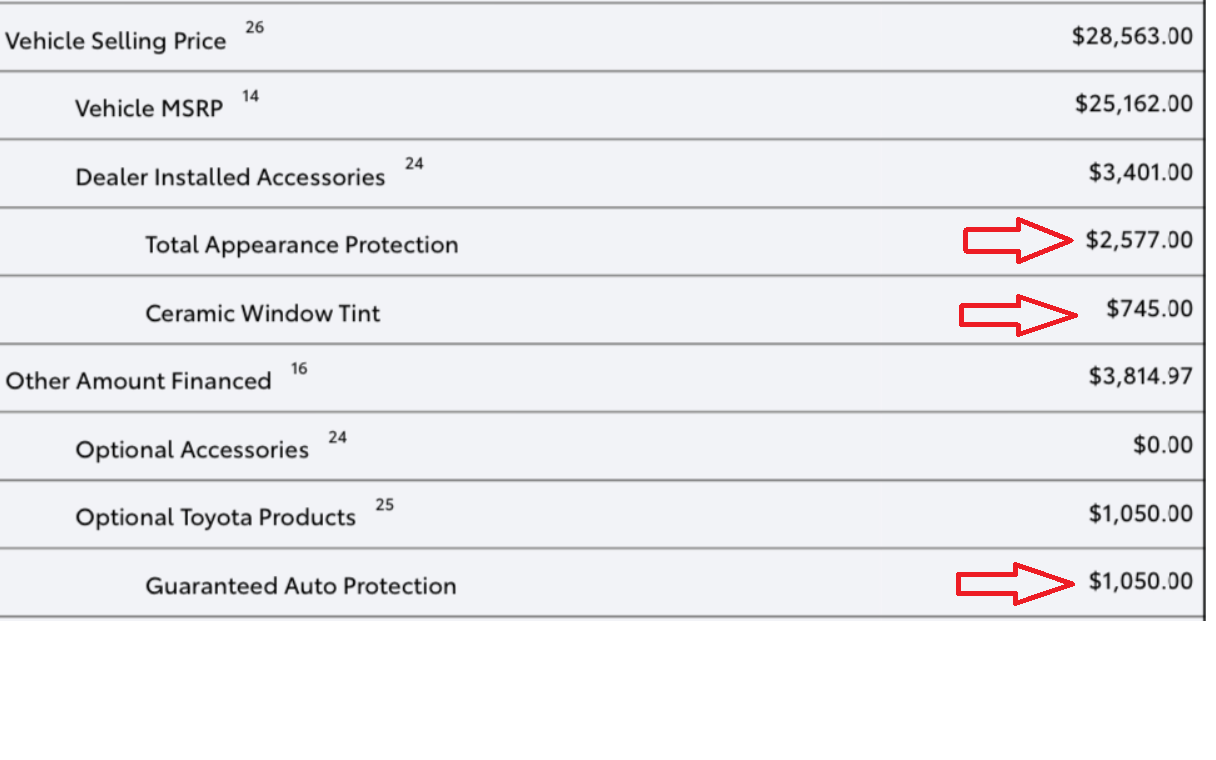
When purchasing a vehicle, it’s crucial to stay in control of your deal and be aware of the various fees you may encounter. By understanding the legitimate fees, being cautious of questionable ones, and avoiding unnecessary dealership fees and add-ons, you’ll ensure that you’re getting the best deal possible on your next car.
Ready to take control of your car buying experience? Let CarEdge Coach guide you through the process, ensuring you avoid unnecessary fees and get the best deal possible, all with three months of 1:1 expert help. If you prefer a DIY approach, CarEdge Data is the perfect tool to help you make informed decisions and secure a great deal on your own terms. Why do we do it? We simply want to change car buying for the better. It’s about time!
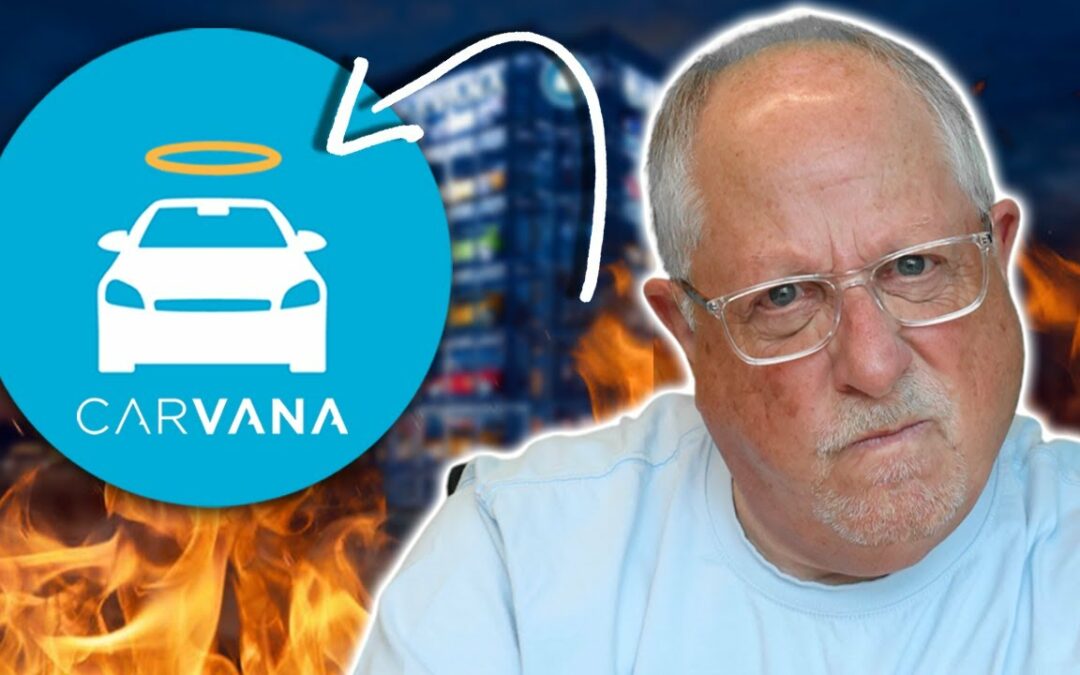
Carvana, the nation’s 10th largest car dealer, has become increasingly popular as an online car dealership. However, despite its growing reputation, there are three key reasons why you should avoid buying your next vehicle from Carvana. Plus, we’ll take a look at the many examples of Carvana selling ‘broken cars’ to customers.
Carvana’s gross profit per vehicle has seen a significant increase, as revealed in their latest earnings report. In Q1 2023, their profits per car sold rose by an astounding 61%. Meanwhile, other online car dealers like CarMax and Vroom haven’t experienced the same success.
While Carvana’s total revenue dropped by 25% to $2.6 billion, their gross profit per unit increased. How did they achieve this? By inflating their car prices. Carvana’s financial success is relying on uninformed buyers to make purchases without realizing they’re being overcharged.
Carvana’s prices are just too high. Unfortunately, car buyers should expect to pay a premium for the no-hassle, non-negotiable prices at Carvana. The company obviously tosses a few thousand dollars onto the price tag as an unofficial ‘convenience fee’ of sorts. In some cases, they’re selling used cars at nearly the same price as new ones.
Take a look at this example. Here’s a 2022 Ram 1500 Crew Cab with 12,667 miles on it, and Carvana is asking $45,990. This isn’t 2021, folks. Truck prices have gone down. In fact, our Car Coaches are regularly negotiating over 10% off of MSRP for brand-new trucks.
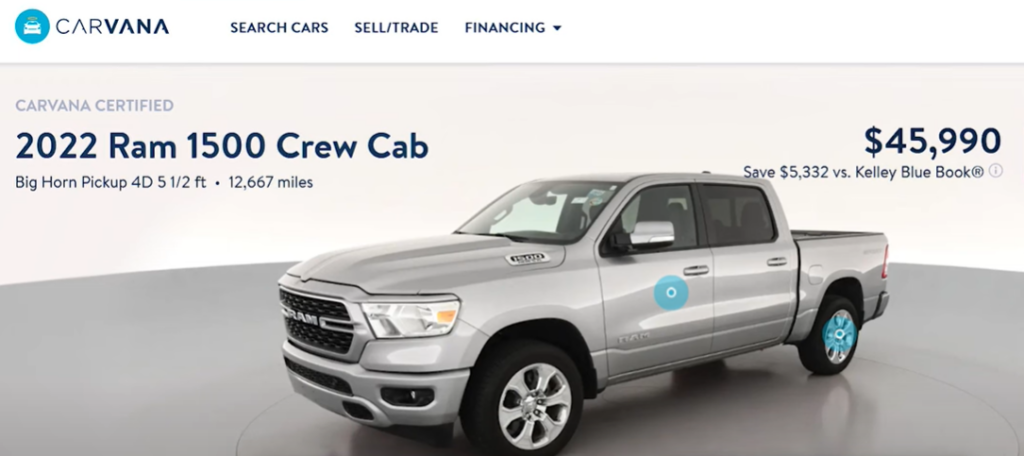
On CarEdge Car Search, we can see that Carvana has been trying to sell this truck for well over a month, and has already dropped the price by $3,000.
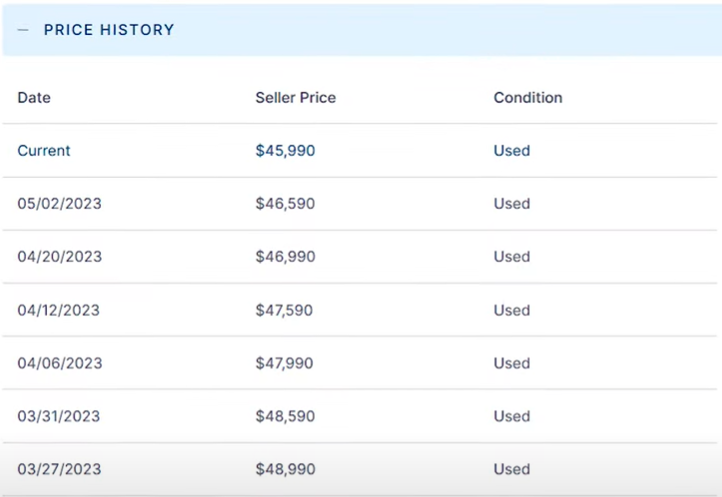
The new 2023 Ram 1500, same trim and all, is within range of the USED Ram truck once current market negotiability is taken into account. And this truck, even if it’s a few thousand dollars more, comes with a full warranty, and is without the mechanical unknowns that come with every used vehicle at Carvana.
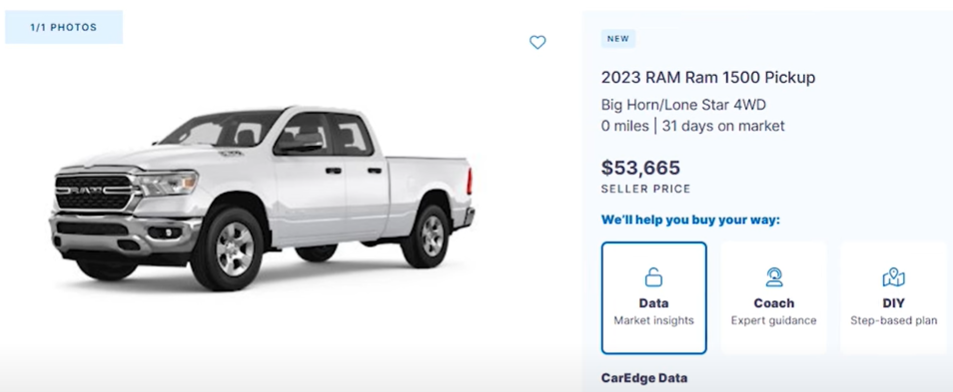
Simply put, Carvana’s prices are just too high, but not all buyers will notice. Be sure to check CarEdge Dealer Reviews to see what others have experienced near you.
Carvana has a concerning track record of selling vehicles with serious quality issues. While not every car they sell has problems, it’s a recurring theme that cannot be ignored. Poorly reconditioned cars, or worse, are all too common in their inventory.
These are just a few of the real, horrific issues that Carvana’s customers have had to deal with:
Remember, if you can’t get an independent pre-purchase inspection (PPI), it’s not recommended to buy from that dealer. With Carvana, this is often the case.
Learn more about why getting a pre-purchase inspection is SO important.
In most instances, you’d be better off negotiating a deal on a new car rather than overpaying for the convenience of avoiding negotiations with Carvana. Do your research, compare prices, and make sure to prioritize quality when purchasing your next vehicle. Don’t be lured by the seemingly hassle-free car buying experience Carvana offers, as it could end up costing you more in the long run. Don’t forget to check the latest Carvana reviews at CarEdge Dealer Reviews!

Ready to outsmart the dealerships? Download your 100% free car buying cheat sheets today. From negotiating a deal to leasing a car the smart way, it’s all available for instant download. Get your cheat sheets today!

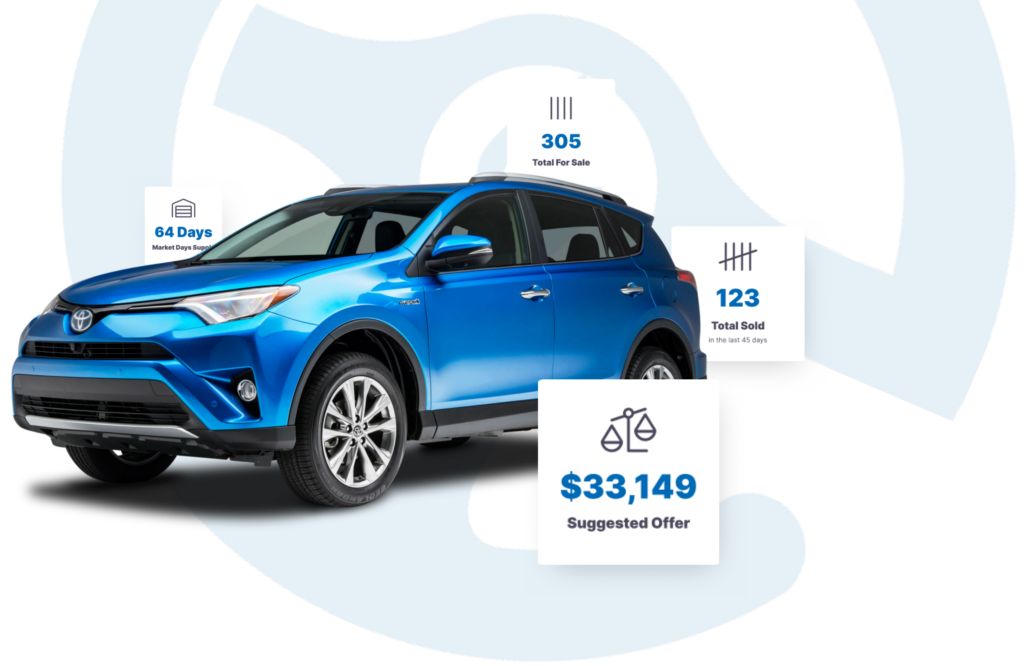
If you’re thinking about selling your car, you need to get a quote from EchoPark Automotive. Why would we insist that thousands of CarEdge Community members consider giving one online car buyer special consideration? Frankly, EchoPark is overpaying for used cars, and writing big checks to sellers in the process. Here’s what our team found using this free CarEdge offer comparison tool.
We did some research with CarEdge’s Sell Your Car offer comparison tool, and we found that EchoPark is paying too much for used cars. “Apparently, EchoPark has decided that they want to be the next Carvana,” exclaimed CarEdge Co-Founder Ray Shefska. Ray says that EchoPark may be putting themselves in a position where they’ll be buying high, and selling low.
We got offers from multiple online car buyers, and the difference was shocking.To get a sense of the overall market conditions for online car buyers today, we requested offers for a number of vehicles in different markets in America.
For example, we found a 2016 Ram 1500 for sale by Carvana in Kansas City, and received offers from multiple online buyers, such as Cargurus and CarMax. It turns out that EchoPark is not yet in the Kansas City market (more on that in a moment).
Cargurus made the highest offer, at $23,000. That’s $9,000 less than Carvana’s current asking price of $32,000. That sounds about right, at least in today’s market. But this is where EchoPark’s growing presence in online car buying enters the scene. They’re not in every market, but where they are, they REALLY want to buy your car.
Now, let’s take a look at EchoPark’s determination to gain inventory. Over at CarMax, we found a 2021 Toyota RAV4 XLE on sale in Colorado Springs, Colorado for $33,000. CarMax is known as one of the higher-priced car sellers, since they claim to have no-haggle pricing (although you CAN negotiate your deal). For this RAV4 on sale for $33,000, EchoPark would pay $31,862 to buy it! It’s absolutely insane to see an online car buyer offering just $1,200 less than the car’s listing price. That’s yet another sign of a used car market out of whack.
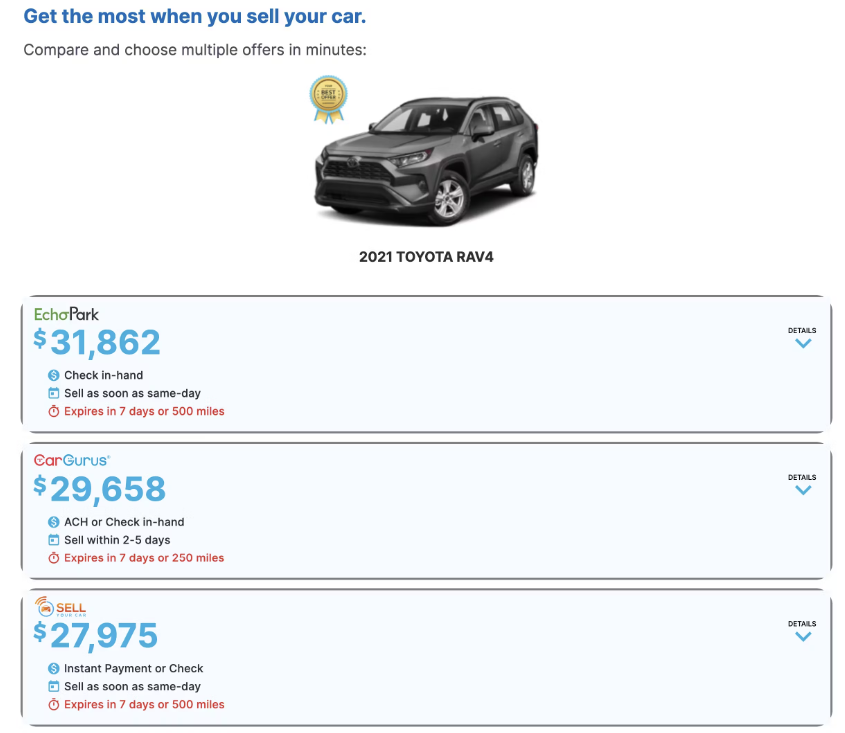
Let’s take a look at one more example. To be sure this wasn’t a Toyota fluke, we picked this 2019 Ford F-150 Lariat. CarMax is asking $43,000, but EchoPark is willing to pay $38,700 to buy it. That’s NOT normal in the used car market. This is like if you went out and bought a $500 TV, and your neighbor offers to buy it off of you days later for $475. Crazy, right?
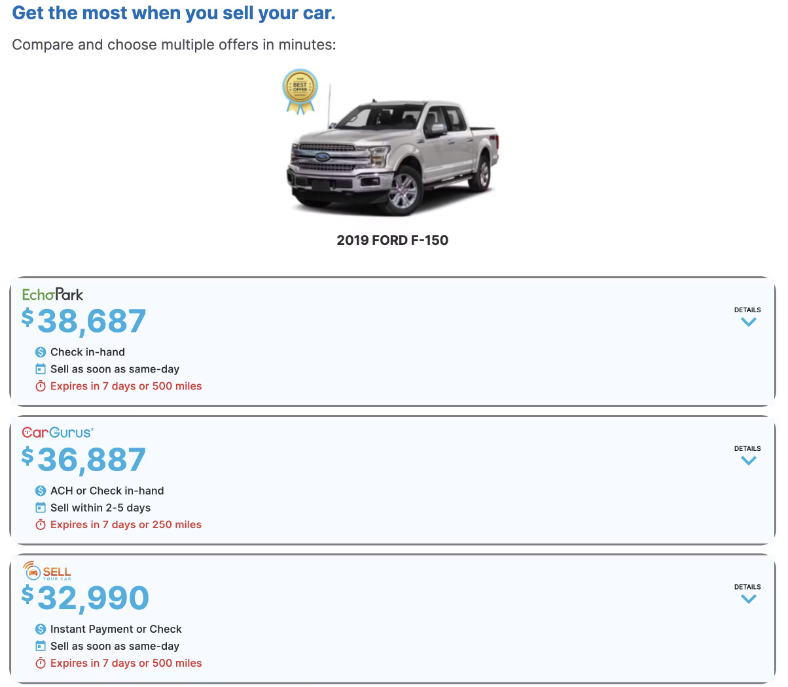
What does it all mean? This is a recipe for selling at a loss. Ray put it best, “Either EchoPark is desperate for inventory and isn’t worried about losing money on used cars, or this is pure insanity!”
These instant offers from online car buyers are generated by an algorithm that is supposed to offer a compelling price for the seller, but an offer that also makes it easy for the buyer to then sell that vehicle for a profit. Clearly, either there’s something wrong with EchoPark’s algorithm, or they seriously need inventory, and are willing to pay a price for it.
Yes, EchoPark is a legit business that buys and sells used cars online. EchoPark does not sell new cars. It’s also important to point out that EchoPark Automotive does not buy and sell in all markets. To sell your car to EchoPark, you’ll need to be close to one of their Vehicle Buying Centers. Most locations are in the southern half of the country, from coast to coast. See the latest EchoPark dealership locations here.
When you get an offer to sell your car to EchoPark, your offer is good for 7 days or 500 miles, whichever comes first. If you complete the deal within two days, they throw an extra $250 onto the offer.
When it comes to inventory, EchoPark mostly buys and sells 1-5 year old cars with low mileage. All of EchoPark’s cars come with a 7-Day Money Back Guarantee, similar to Carvana’s 7-day money-back guarantee, and CarMax’s 30-day money-back guarantee, as long as you’ve driven under 1,500 miles.
Before you sell to EchoPark Automotive, we highly recommend that you compare offers from multiple online car buyers. You’ll get offers from reputable buyers like CarGurus, CarMax and EchoPark in seconds!
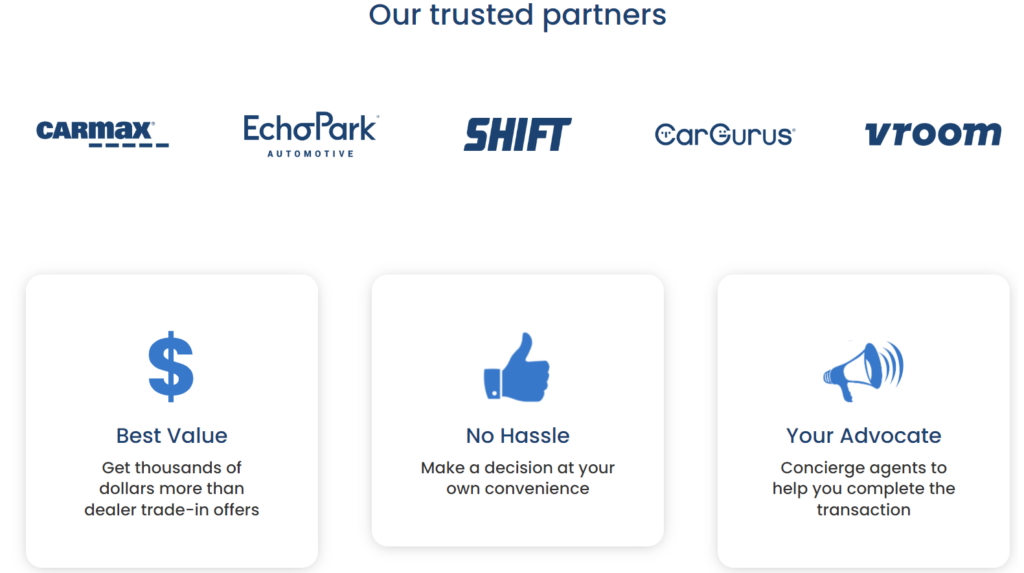
Thinking about buying from EchoPark? It’s possible that you’ll find a great deal, but it’s also possible (almost likely) that they’ll be overpricing their used car inventory to try and recoup money from overpaying for inventory.
We want to help you buy confidently. Do your due diligence and guarantee savings with the latest local car market data on CarEdge Car Search. How about premium market insights like Black Book trade-in values, negotiability score and official CarEdge recommendations for every listing? With CarEdge Data, you’ll get that and more.
Have you sold a car to EchoPark? Perhaps you’ve bought a used car from them? How did it go? Let us know in the comments below!

When it comes to buying a new car, getting the best deal is crucial. That’s why our CarEdge Car Coaches have put together a list of the discount you should expect on the 10 best-selling new cars and trucks. Consider this guide step one of the journey towards finding a great deal on a new car. These insights can help you save thousands of dollars on your next vehicle purchase.
Our CarEdge Car Coaches help hundreds of car buyers every week, and they get a good feel for the negotiability of today’s car market in the process. Based on current market conditions, these are the appropriate discounts CarEdge Car Coaches are seeing for the best-selling new cars and trucks. We’re also sharing average listing prices for brand-new 2023 models, as well as any remaining new 2022 inventory.
| Make | Model | Starting MSRP | Average Listing Price | Negotiability (Off MSRP) |
|---|---|---|---|---|
| Ford | F-150 | $35,590 | $62,353 | 3-6% |
| Chevrolet | Silverado | $37,395 | $58,140 | 5-11% |
| Ram | 1500 | $39,305 | $62,513 | 3-13% |
| Tesla | Model Y* | $48,630 | $66,506 | 0% |
| Toyota | RAV4 | $27,975 | $36,664 | 0% |
| Nissan | Rogue | $28,655 | $34,339 | 0-6% |
| Honda | CR-V | $32,355 | $36,607 | 0-2% |
| GMC | Sierra | $38,995 | $49,998 | 0-11% |
| Toyota | Camry | $27,315 | $31,946 | 0-3% |
| Tesla | Model 3* | $41,630 | $40,607 | 0% |
Looking for negotiability info for other models? With CarEdge Data, you’ll see negotiability scores for every new and used car listing. Want personalized help? Our Car Coaches are ready to help you get the best deal today. Here’s how CarEdge can help.
The Ford F-150 is the best selling truck in the United States. With a starting MSRP of $35,590 the F-150 may seem like a reasonably priced pickup, however the average advertised price is much higher. Our analysis of 100,000 2023 Ford F-150s listed for sale shows an average advertised price of $62,353.
As Ford inventory builds back up, our Car Coaches have helped customers get between 3-6% off of MSRP.
In the screenshot below for a listing in the Dallas market area, you can see there is 184 days supply of inventory. This is well above the industry norm of 60-90 days. This means Ford dealers should be motivated to discount and make deals.
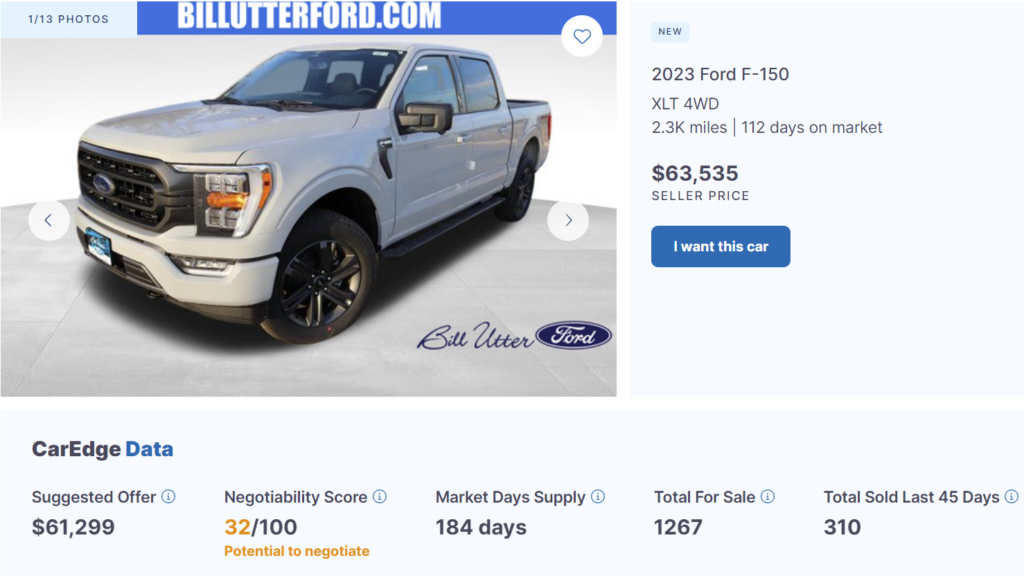
See F-150 listings with no ads and local market data.
If you’re in the market for a new truck, our Car Coaches say that the Silverado 1500 is especially negotiable. In recent deals they’ve negotiated for our members, they’ve found that between 3% and 11% can be negotiated off of MSRP.
GM is having a REALLY hard time selling trucks. It’s gotten so bad that the automaker paused production as dealer lots filled with trucks.
There are plenty of Silverado’s that have been sitting on the lot for over 60 days, but market days’ supply depends on what trim you’re looking at. Remaining new 2022 model years are especially negotiable, such as this truck on sale in Chicago.
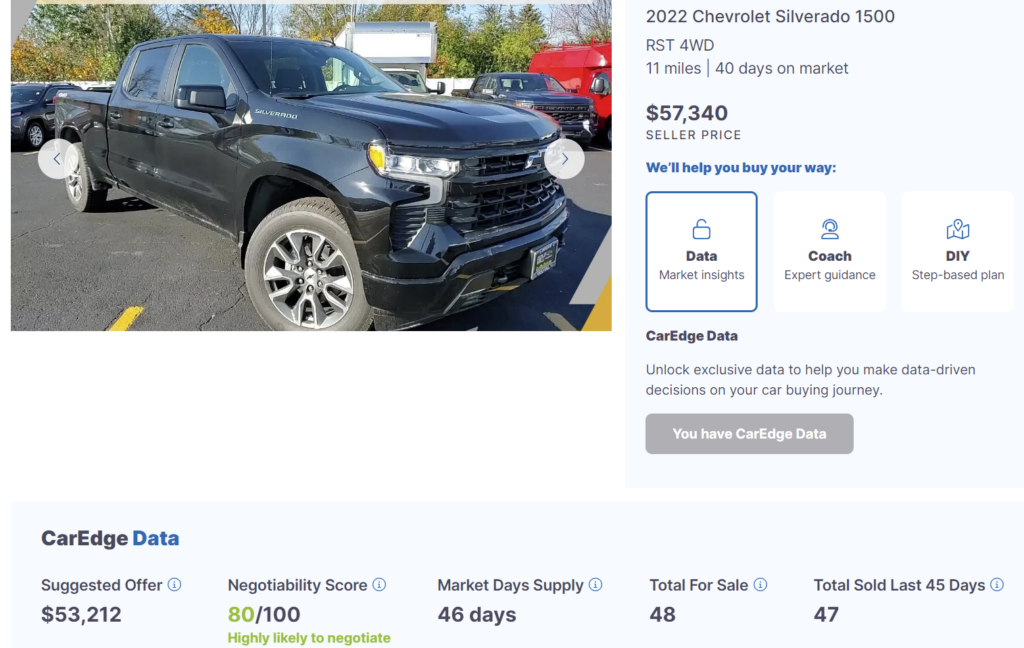
See Silverado negotiability with these local listings.
The Ram 1500 is one of the most negotiable trucks today, with an average discount of around 10% off the MSRP. It’s commonplace for 2022 and 2023 Ram trucks to exceed 120 days supply, which is twice the norm. Here’s our recent report on today’s especially negotiable truck prices.
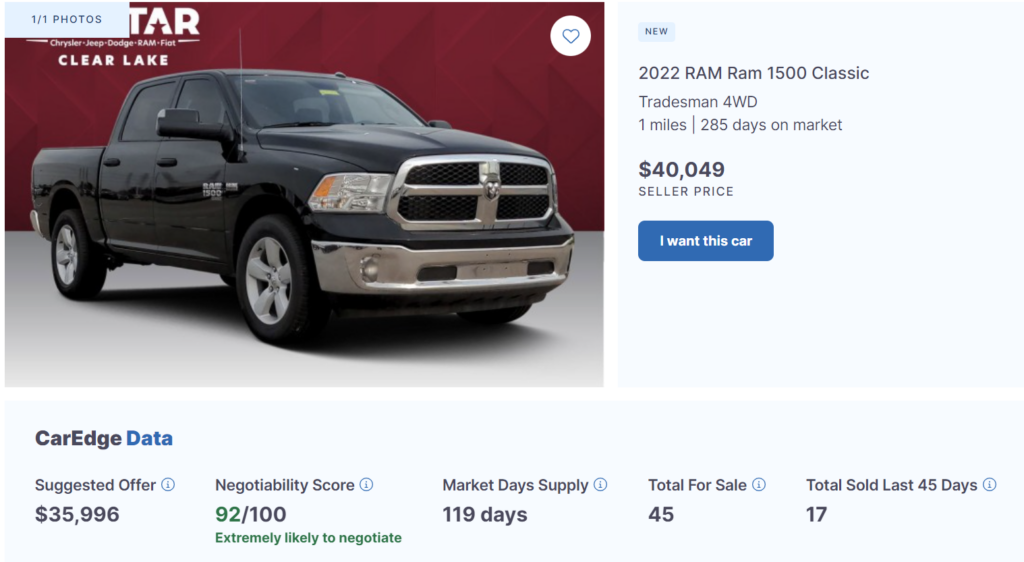
This Ram 1500 on sale in the Houston area has been on sale for nearly 300 days, and is highly negotiable. You’ll always have better chance to pay under MSRP with outgoing model years.
See how negotiable Ram trucks are with these local listings.
Tesla sells direct-to-consumer, so there’s no negotiating new Tesla prices. However, used Tesla’s are negotiable as the automaker continues to drop prices for new cars. Here’s our used Tesla price forecast for 2023.
Be on the lookout for severely overpriced used Model Ys, as dealers try to cover their losses on plummeting used Tesla values.
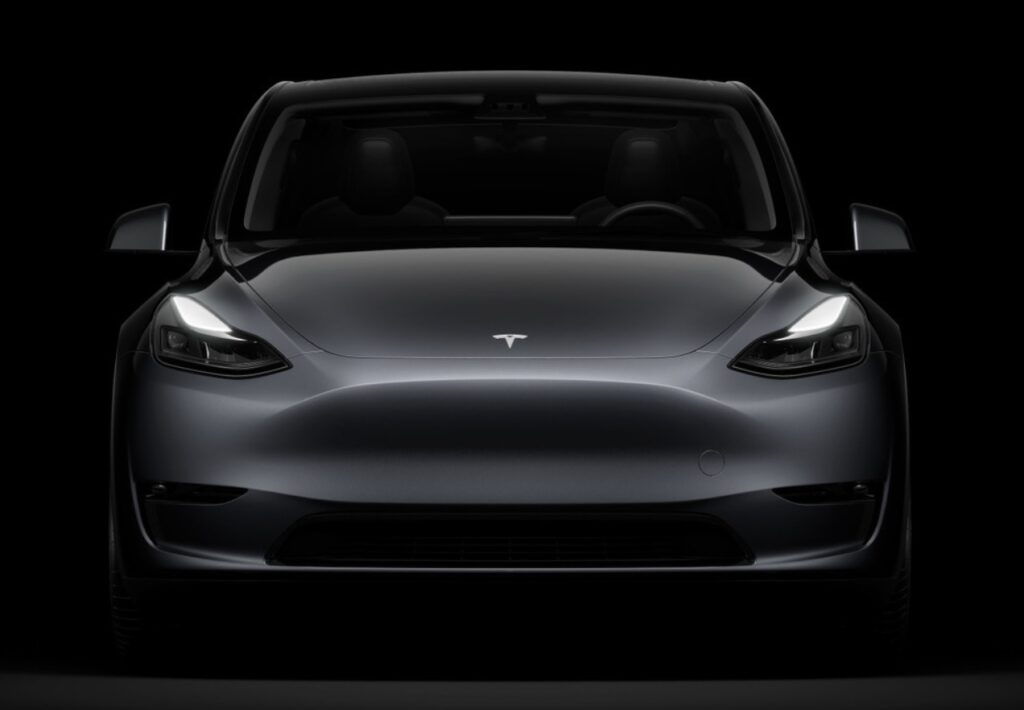
See Model Y listings near you.
The 2023 Toyota RAV4 is one of the least negotiable new cars on the market today, but it’s also one of the most popular. With a starting price well under $30,000, it’s low negotiability is offset by an affordable price and decent fuel economy. The RAV4 Hybrid and Plug-In Hybrid (PHEV) are by far the least negotiable, according to CarEdge Car Coach Justise.
In most regional markets, days supply ranges between 20 and 50 days for the RAV4. This Limited AWD in DC is sadly one of the more negotiable listings, as it’s been on the market for over one month. That’s rare for the RAV4.
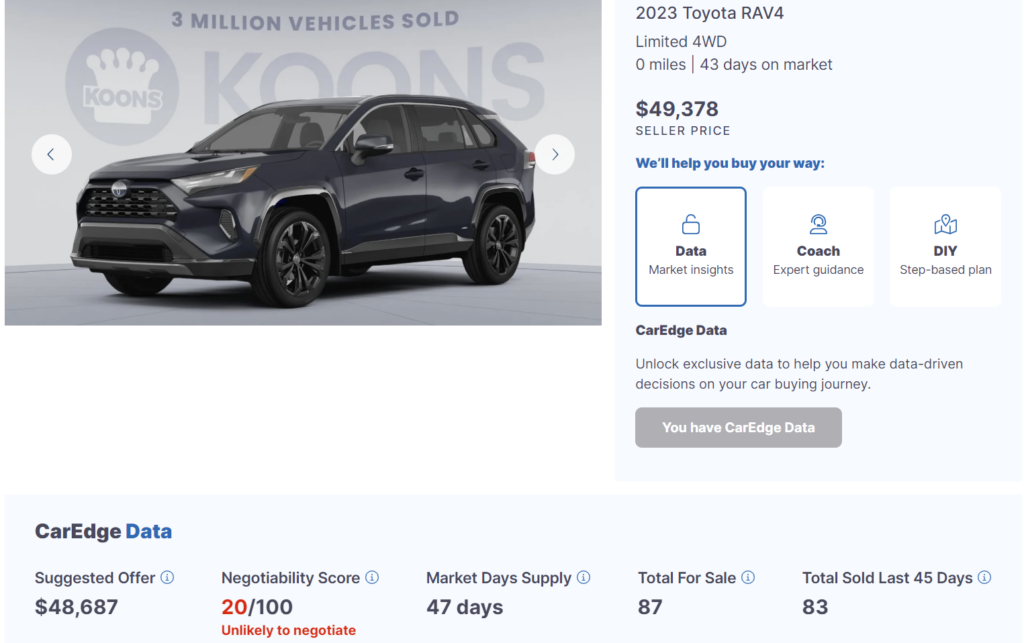
See RAV4 listings near you, with ZERO ads and local market data.
Due to a higher inventory this month, the Nissan Rogue SV is more negotiable. Other Rogue trim options, such as this Rogue S in California, are quite negotiable too, according to our Car Coaches. There will generally be more negotiability towards the end of the month.
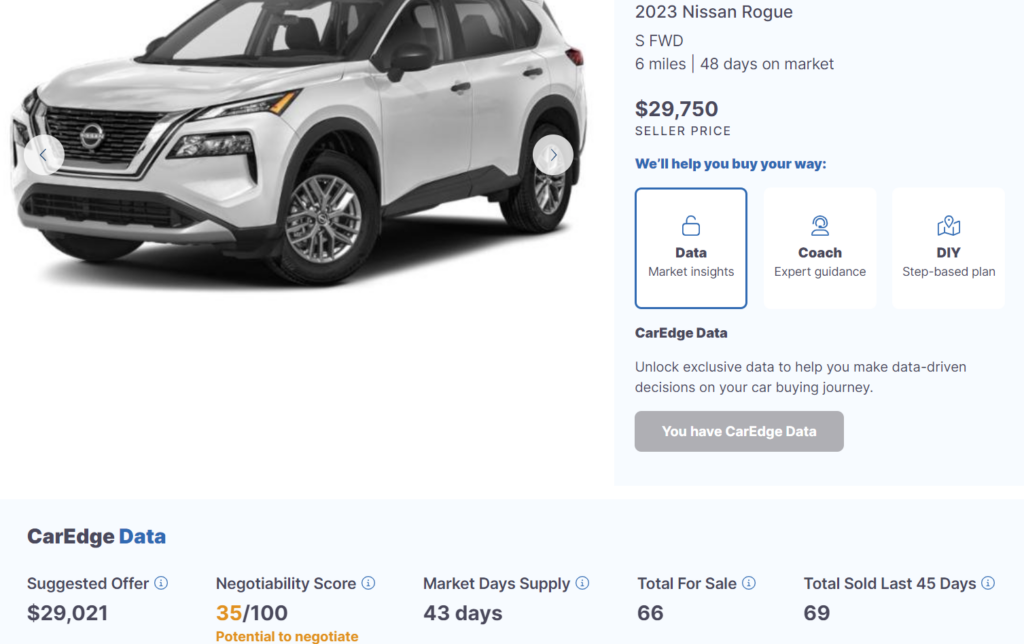
See Nissan Rogue listings near you.
Along with its rival the RAV4, the CR-V is hard to negotiate due to consumer demand exceeding supply. Market Days Supply is FAR below the market norm of 60 days. Some options, such as the all-wheel drive CR-V and CR-V hybrids, have far less supply. We recently took a closer look at inventory in major markets, and the CR-V is hard to find everywhere you look. Be sure to check out new car inventory in major markets across America.
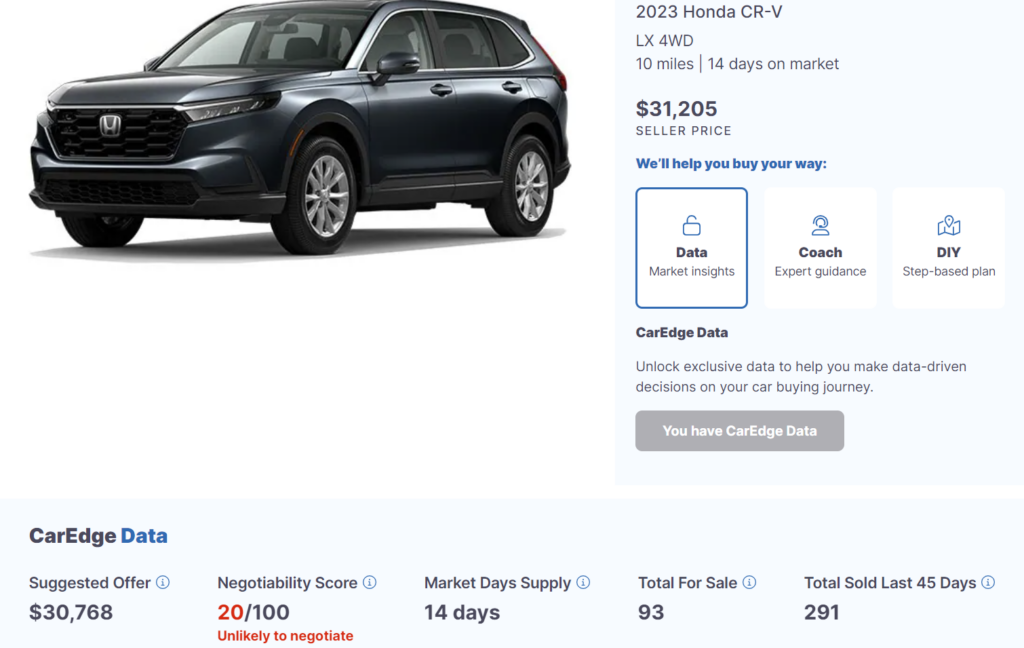
See CR-V listings near you, with ZERO ads.
In some markets, there’s over 200 days’ supply for new GMC Sierra trucks. That’s 2.5 times the industry standard for lot inventory. However, as you can see with this new Sierra listing from Texas, market supply depends on the trim you’re wanting. Check local inventory for brand-new 2022 models still on the lot.
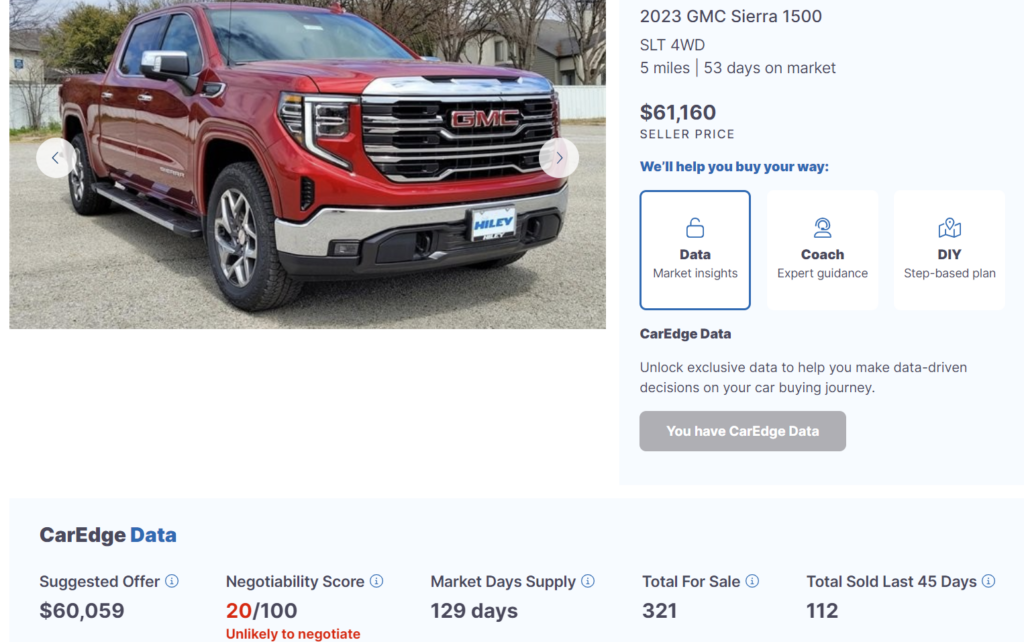
The Toyota Camry is one of the best-selling sedans in America due to its reliability and fuel efficiency. However, its popularity also means that there is high demand and limited supply, which can make negotiating a lower price challenging.
From the East Coast to the Midwest and beyond, Market Days Supply for the 2023 Camry is well under the ‘healthy’ average of about 60 days. This 2023 Camry SE in Florida is a new arrival, and will likely be sold within days.
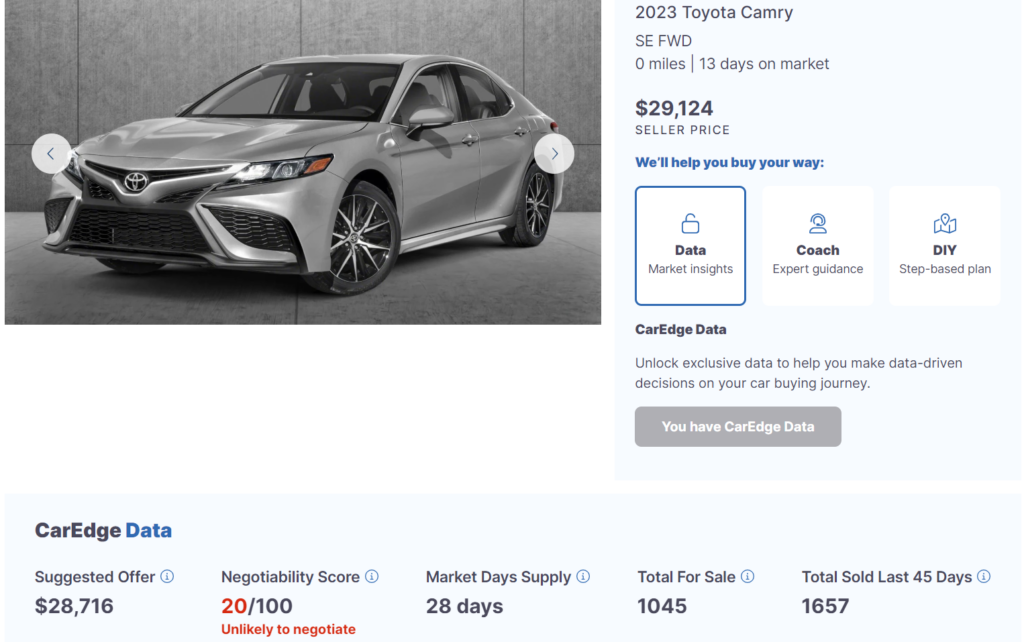
A brand-new Model 3 now starts at just over $40,000 following half a dozen price drops in 2023. But don’t expect to negotiate on a new Model 3 since Tesla sells directly to consumers in states that allow it.
Although you can only buy new Tesla EVs at tesla.com, there are shocking deals on used Tesla models at CarEdge Car Search. See listings near you.
A word of caution: Used Model 3 prices remain VERY inflated as dealers try to recoup losses as new Tesla cars keep getting cheaper.
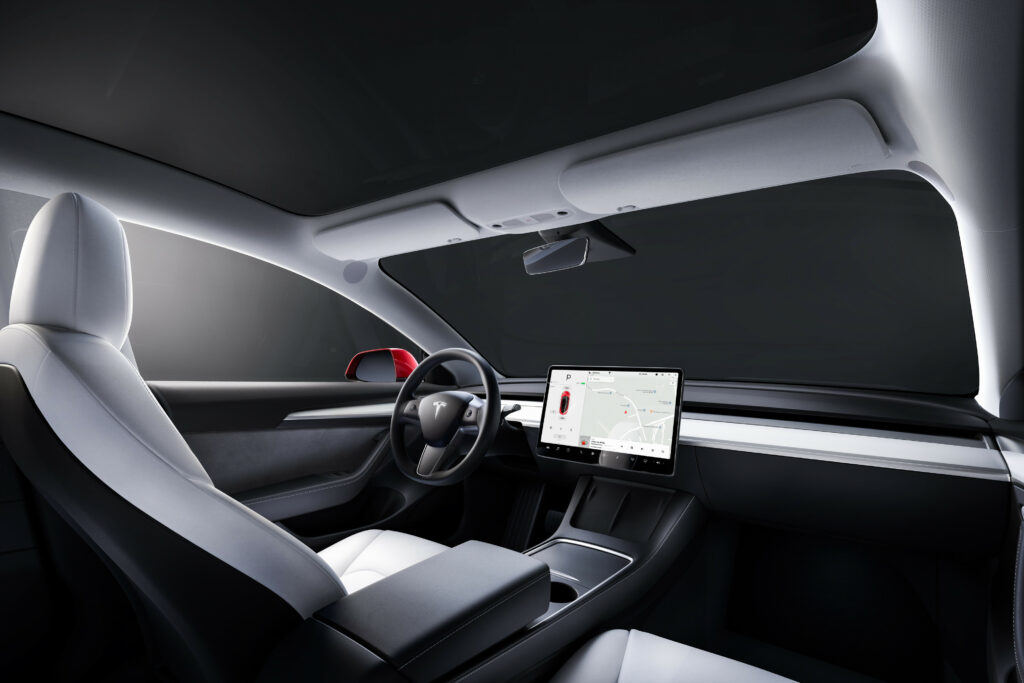
By utilizing the data and insights provided by CarEdge Data, you can unlock a wealth of valuable information to inform your car buying decisions. With access to market data, Black Book valuations, and local inventory information, you can confidently negotiate a better deal on your next car purchase.
And for even more personalized guidance, consider partnering with a CarEdge Coach – our team of experienced car buying experts who can provide you with 1:1 support throughout the car buying process. Don’t overspend on your next vehicle – here’s how much drivers are saving with CarEdge tools and expert help!